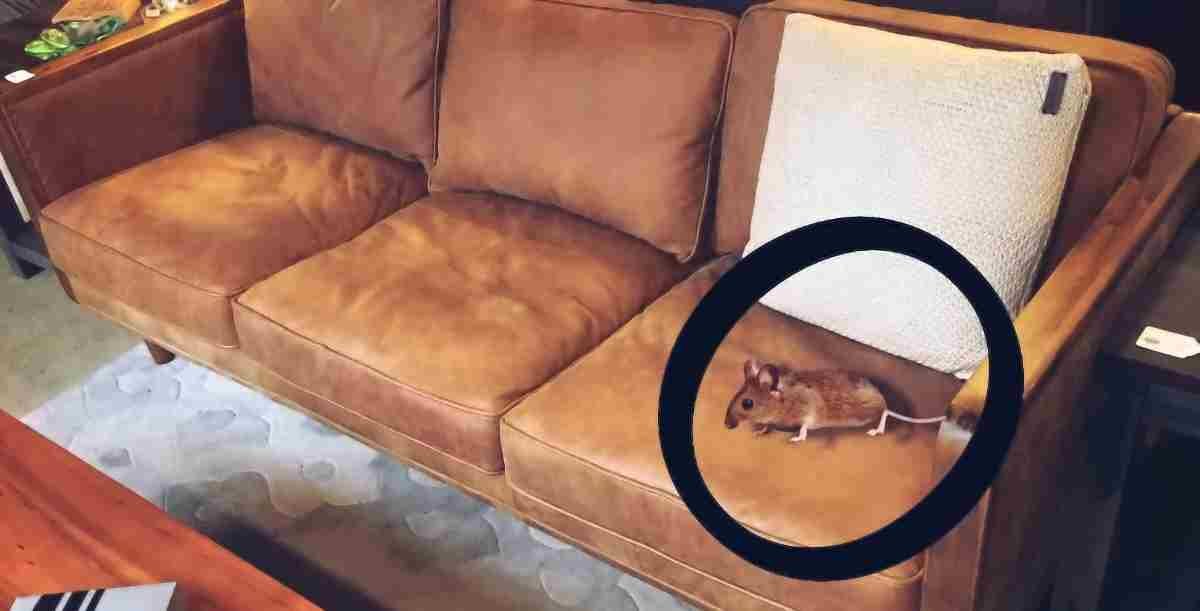It seems you struggle to identify how mice are entering your home. Don’t worry, we’re here to assist! Despite their cute appearance in cartoons, mice can be destructive and can fit through holes as small as a pencil, making it difficult to locate all their entry points. But have no fear, we’ve got you covered. In this guide, we’ll show you how to find where mice are coming into house and how to seal those areas to keep them out.
How to find where mice are coming into house

Mice can come in from anywhere into your home, making it even tougher to tell the exact spot. But that does not mean you can’t detect the exact entry points. Below are the steps to find where mice are coming into house:
1. Look for holes in your foundation
Foundation cracks are a frequent entry point for mice. Even tiny cracks can provide access to these pests. Additionally, they can gnaw away at concrete to make a crack larger, allowing them to get through.
To prevent future invasion, seal the smallest cracks, especially those near areas where mouse activity has been observed.
How to fix:
Small cracks can be easily repaired using caulk or concrete, which can be purchased at a local home improvement store. However, if you notice larger cracks or gaps, consult a contractor for an inspection. They can assess the situation and determine if there is any structural damage that needs to be repaired immediately to prevent more expensive repairs in the future.
2. Inspect the crawl space or basement
Mice often make their nests in basements and crawl spaces. If you don’t frequently visit these areas, take some time to inspect them for signs of mouse activity, such as nesting materials or droppings that have a distinctive ammonia odor. These indicators are often a clear indication that mice have taken up residence in your basement or crawl space.
How to fix:
To efficiently find where mice are coming into house, wait until it’s dark outside and have someone shine a flashlight along the walls of your basement or crawl space while you observe from the outside.
Any areas where you can see light shining through indicate a crack that needs to be filled. To seal the cracks, stuff steel wool into the gaps, and then use concrete, caulk, or a commercial sealant to cover them.
3. Check the cracks in your exterior walls
Begin your inspection at the bottom of the wall and work your way upward. Lower-level gaps are more accessible to mice than those located higher up. Any crack or gap is a potential entry point, so be thorough in your search.
Keep an eye out for signs of mouse activity, such as gray smears or greasy streaks, an ammonia odor, or droppings. These indicators will help you determine which areas mice are most likely to use as entry points.
How to fix:
Wait until you have not observed any signs of mouse activity for a few months before sealing cracks.
If you trap mice inside your walls, it could result in unpleasant odors and the need to remove dead mice. To prevent mice from re-entering, plug the gaps with steel wool or tin before sealing them. This material will prevent mice from gnawing through and entering your home again.
4. Look for gaps between walls and pipes
Pipe gaps are a favored entry point for mice. Inspect the areas where pipes enter and exit your home, paying close attention to any space between the wall and the side of the pipe.
How to fix:
When you find where mice are coming into house, close the gap around the pipe at the wall using scrap metal, and then secure the metal in place with caulk or a commercial sealant. If you have open pipe ends outside, cover them with wire mesh to prevent mice and other pests from traveling into your home through the pipes.
5. Inspect the cable and wire spaces
Contractors installing cables and wires often leave gaps unblocked. Inspect these areas both inside and outside of your home to find where mice are coming into house, as mice can enter through exterior gaps and also use gaps in interior walls to move around within your home.
How to fix:
After you find where mice are coming into house, protect the cables and wires with steel wool, and then secure the steel wool in place using expanding foam or a similar sealant to keep mice from accessing your home.
6. Screen off vents and drains
Inspect vents and drains, such as those in the attic or laundry room, and if they are open, fit a fine mesh screen to the inside of the outer vent or drain cover. Ensure that the screen covers the entire opening to effectively block mice.
How to fix:
Installing metal screens can prevent pests from entering while still allowing vents and drains to function properly.
7. Check the door seals
Mice can enter your home even through closed doors if they don’t seal properly.
If light can be seen through the sides of the door when it’s closed, or if you can feel air coming through when a fan is placed on one side of the door, then there is likely a gap that mice could use to enter.
How to fix:
If the gap is larger than 4 millimeters (0.16 in), install door brush strips or door sweeps at the bottom of the door. Besides, mice can fit through a hole the width of a pencil (1/4 inch or 6 millimeters in diameter). For smaller gaps in the door frame, use expanding foam insulation to seal them.
8. Check the windows lock
Signs of mice such as greasy streaks or droppings around your window locks indicate that they are entering your home through that point. So, inspect your window locks to find where mice are coming into house.
How to fix:
Install weather stripping on all of your windows to ensure a tight seal and cover any edges with metal to prevent gnawing.
Also, patch up gaps and cracks even if there are no visible signs of mice activity, as a preventive measure.
Repair any damaged or holes in your window screens, especially if you plan on opening your windows during the warmer months. Ensure that the screens fit snugly into the window to prevent mice from entering.
9. Mice love your yards
Mice have a variety of food sources and typically live outside of homes, visiting different locations to feed. If your yard is home to food sources, mice will eventually find their way into your home.
How to fix:
You can reduce mice entry into your property from your yard by following the measures below:
- Trim any vegetation near your home.
- Store pet food and water indoors at night.
- Ensure that trash cans are tightly closed and kept away from the house.
- Properly dispose of any junk.
- Elevate woodpiles at least 30 cm (12 in) off the ground.
10. Your kitchen is home to mice food sources
Mice searching for food may find their way into your kitchen. To find where mice are coming into house, inspect cabinets, drawers, and the areas under and behind appliances for evidence of mouse activity such as droppings, shredded paper as nesting material, or greasy gray streaks.
How to fix:
If you notice any signs, take immediate action. Clean out the area thoroughly by removing all items and eliminating all traces of mouse activity.
Seal any cracks or gaps in your cabinets as well as the spaces between the cabinets and the walls. Use steel wool to fill larger gaps and patch larger holes with pieces of tin cut from cans. Additionally, inspect the areas around gas and water connections for gaps. These areas are often neglected during installation and can provide entry points for mice.
11. Check for clutters in your garage
If your garage is attached to your home, that can be appealing and easily accessible to mice.
How to fix:
The tightness of garage doors can often be a problem, but to combat this, remove any trash and food sources from the garage.
Store trash and food outside the garage, in metal containers if possible. Secure crafting and building materials, like wood and paper, in metal containers to avoid attracting mice. Inspect the walls of the garage for cracks and seal them to prevent mice from entering through these gaps.
12. Look out for roof gaps
Check your roof and chimney, and make sure they’re in good repair. Mice can get in through small holes and cracks, so patch any damage and make sure everything’s secure.
Look for gaps around roof vents, rooflines, and any other roof penetrations. Fill any gaps with steel wool and seal them in place with a commercial sealant.
Inspect all rooflines and eaves, including the soffits, for gaps and cracks. Fill these gaps with steel wool and seal them to prevent entry.
Final thoughts – find where mice are coming into house
If you determine that you have a mouse infestation, consider professional services to control mouse presence in your home. Sometimes, DIY procedures may not be enough to expel mice from your home.






